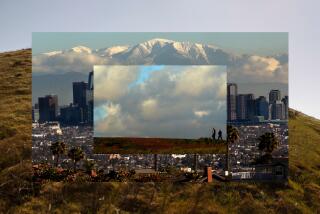Come hike the demilitarized zone between the Koreas. Please watch your step
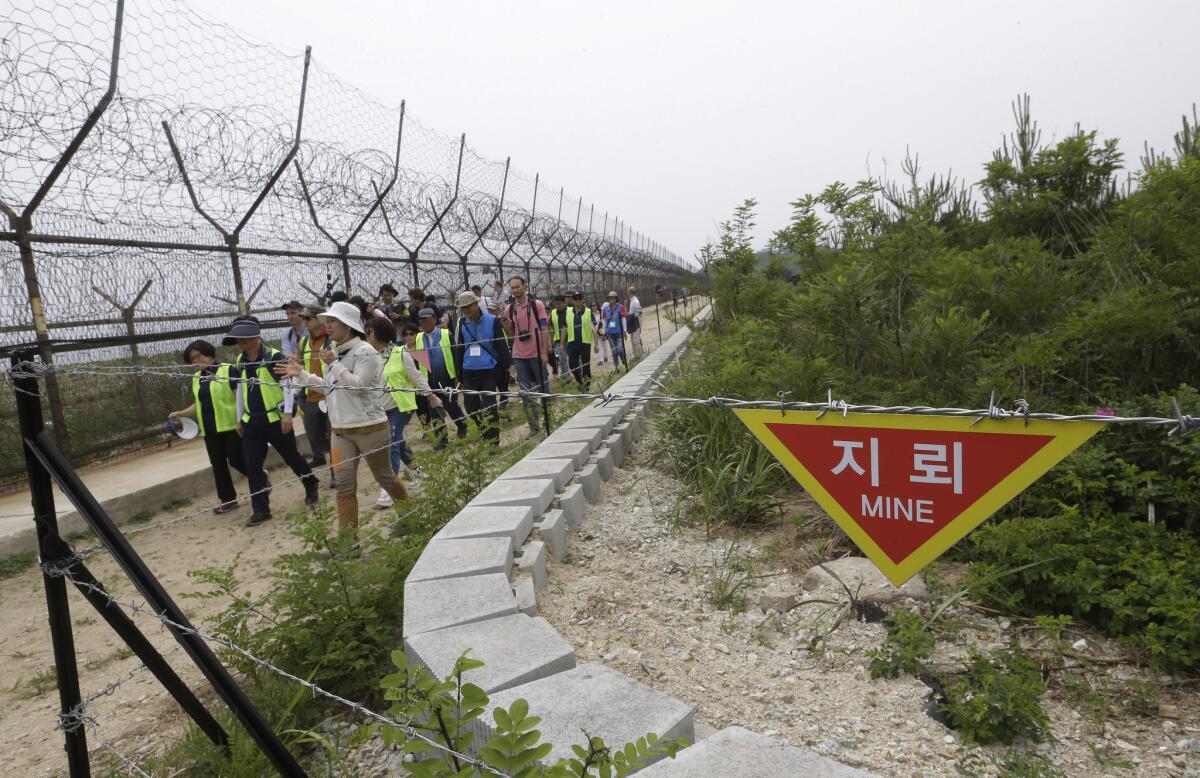
- Share via
Reporting from Goseong, South Korea — To reach the trailhead, you have to drive through the checkpoint manned by rifle-toting soldiers, park near the Korean War-era plane and find the locked wooden gate at the end of a gravel lot.
Don’t mind the military police, the miles of concertina wire or the bright red and yellow signs warning of some 200,000 landmines.
It’s all part of the experience of hiking in the demilitarized zone, the 2½-mile-wide buffer strip between North and South Korea.
And please, selfies only in designated photo areas.
It’s no Yosemite, but the DMZ features some stunning coastline with sweeping ocean vistas and a clear view of Mt. Kumgang, the North Korean mountain range famed for its beauty.
In the 66 years since the demilitarized zone was created at the end of the Korean War, it has largely remained off-limits to civilians, the stuff of stories told by South Korean men who served in the military and the site of several near-skirmishes that could very well have rekindled war.
But in recent months, South Korea opened up two hiking trails and is planning a third as part of its effort to ease tensions with North Korea.
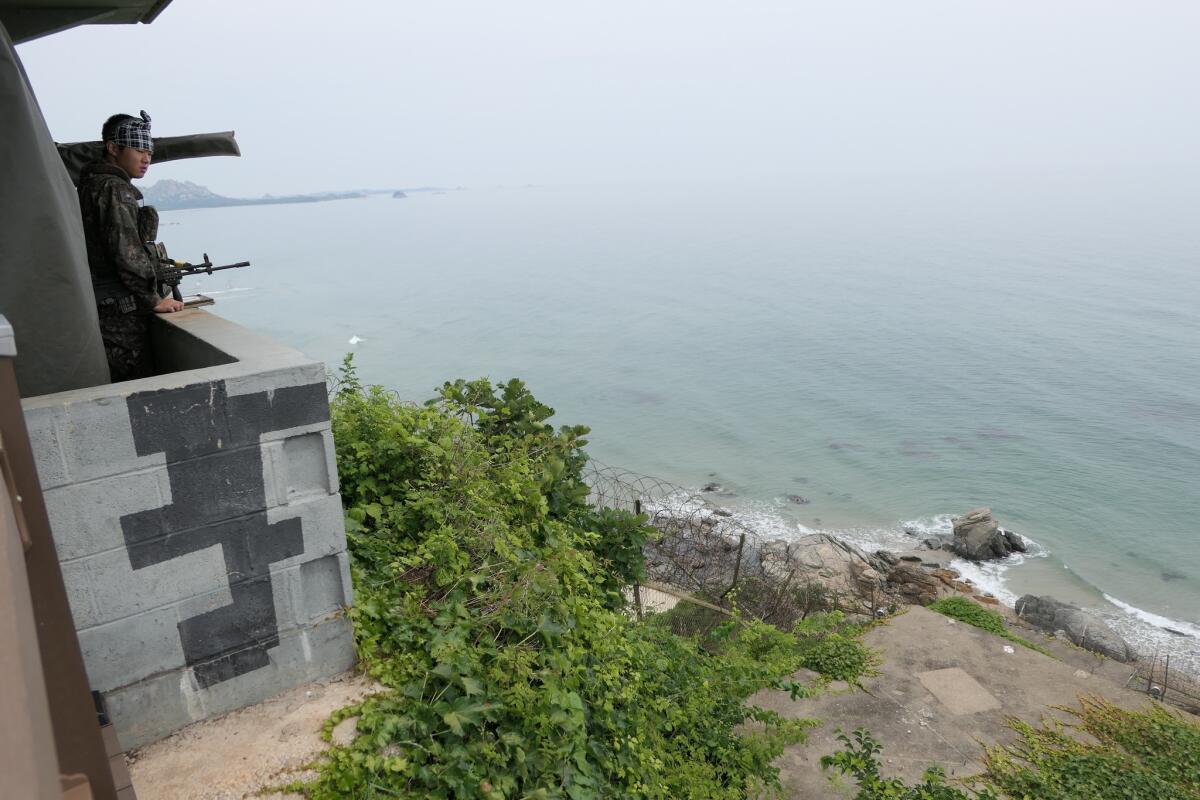
The coastal route, a flat 1.7-mile trek that takes off from Goseong County on the east coast of South Korea, opened in late April to mark the one-year anniversary of South Korean President Moon Jae-in’s meeting with North Korea’s Kim Jong Un, which took place ahead of President Trump’s first summit with Kim.
At the time, Moon and Kim pledged to lessen military tensions along the border and “transform the demilitarized zone into a peace zone in a genuine sense,” by each side doing away with 10 guard posts and discontinuing the blaring of propaganda over loudspeakers, or in South Korea’s case, K-pop music. Trump is expected to visit the DMZ, where American soldiers are stationed to keep peace as part of the United Nations Command, when he visits Seoul this weekend.
With nuclear talks between the U.S. and North Korea on indefinite hold since February’s summit between Trump and Kim in Hanoi, there’s little South Korea can do on projects planned with the North such as reconnecting rail lines and roadways or restarting a joint industrial complex.
So it turned to nature.
The coastal trail is open each day to two groups of 20 hikers — chosen by lottery — who are assigned to a tour guide and herded along by unarmed military police who don’t hesitate to sternly tell hikers when they’ve stepped out of bounds. At the moment, the trips are open only to South Korean citizens.
On a recent overcast and muggy Friday, the group included a 10-year-old girl, who wasn’t quite sure what was on the other side of the fence, and a 78-year-old man, who was her age when the Korean War broke out and vividly remembered the firefight reaching his hometown down south.
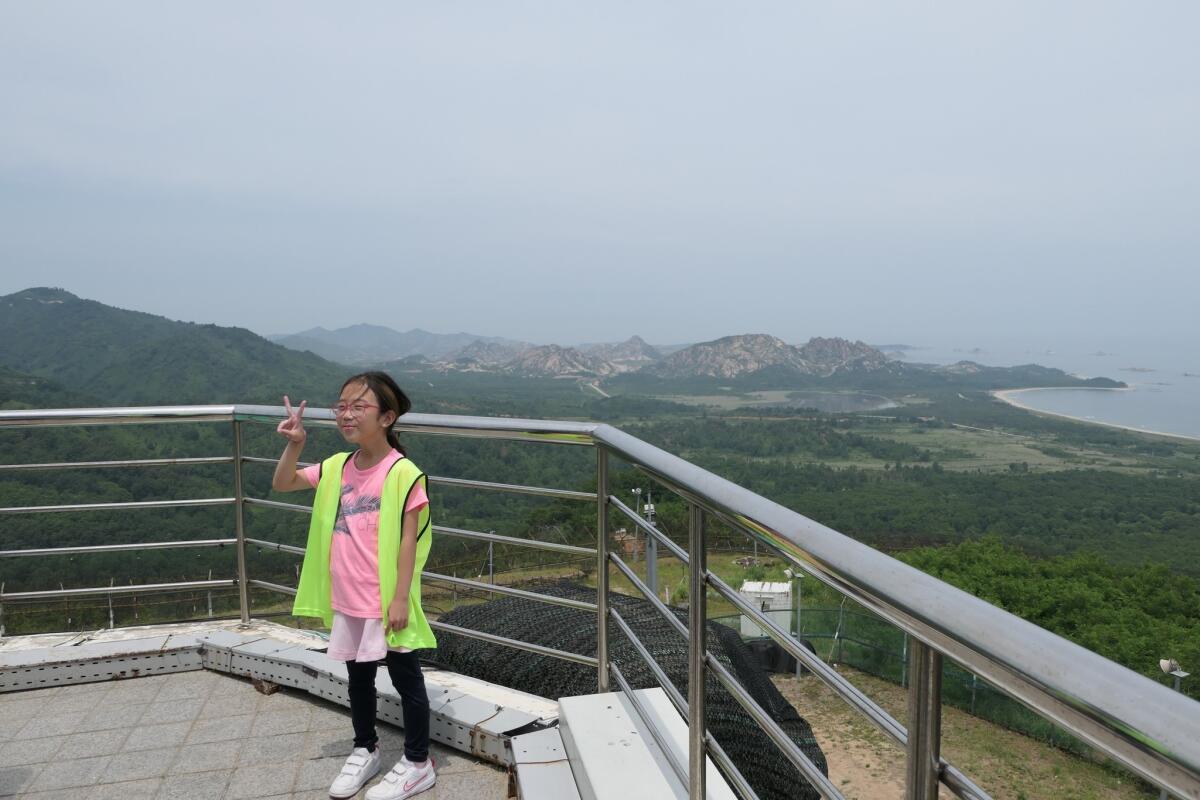
Each hiker donned a bright yellow vest and followed soldiers through the gate, past a guard post and down wooden steps to the seaside trail running along unused train tracks and lined the whole way with a tall barbed wire fence.
Park Hye-hi, the 10-year-old, wore pink glasses, white-and-pink Nikes and a sheepish smile. She clung to her mother’s hand as they walked the sandy path.
She and her parents left their home in Suwon, just south of the capital Seoul, at 3 a.m. to get to the trail in time for the 10 a.m. start. Her father had served in the DMZ when he was in the military and wanted to show it to their daughter.
Her mother, Choi Gyu-ri, said the family entered the lottery four times before being selected.
Hye-hi was far too young to know the history of the two Koreas or the present geopolitics, but her mother hoped the trip would be a memorable experience that the girl could look back on when it comes time for her to learn about the war.
“I hope for our children’s generation, there won’t be this pain of separation, and that there’ll be exchanges among the kids,” she said.
About an hour in, the group came upon a line in the sand — a concrete demarcation less than a foot wide. The chipper tour guide, Goseong resident Park Jeung-hey, wearing bright red lipstick, ushered the hikers across the line.
“You’re now in the demilitarized zone. You’ve stepped over the Southern Limit Line,” she said, explaining that there wasn’t a fence there because the line was moved north over the decades to a more easily guarded vantage point.
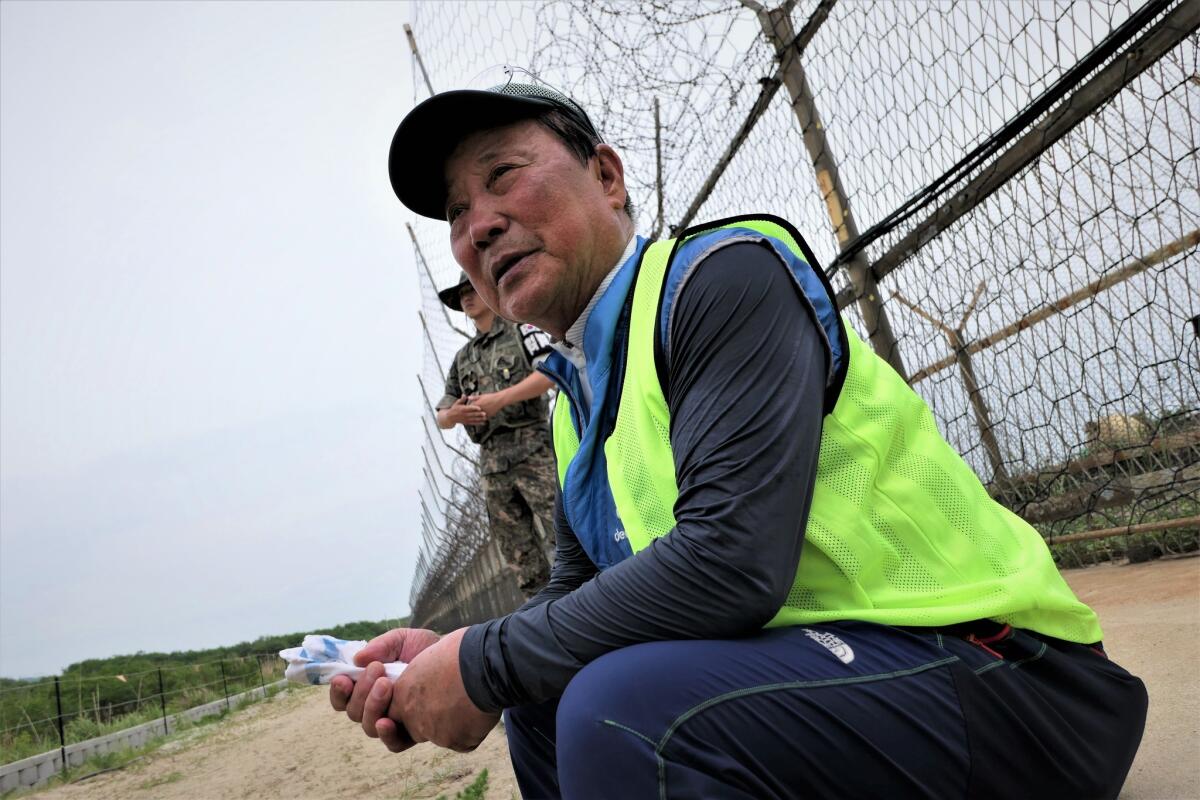
Park Il-pyung, 78, massaged his legs and sat down to take a break on a concrete curb, wiping the sweat from his face.
He’d driven up the day before with his son, Sung-man, from their hometown of Changwon on the southern coast, a trip that took nearly six hours. They too had entered the lottery several times. Park said he remembered the artillery tearing through the night sky during the Korean War, and the hunger from having only powdered grains to eat as his family fled the fighting.
Sung-man, 48, his youngest, had never been to the DMZ, having done his military service far away from the border.
“It reminds you of the reality our country is in,” the son said of the hike. “It’s poignant. … Maybe one day we’ll be able to freely go back and forth.”
At the halfway mark, the group came upon a mangled forklift. The guide explained that 16 years ago it had hit a landmine while installing power lines. The driver survived.
About 62,000 of the roughly 200,000 landmines sprinkled throughout the DMZ had been removed over the years, at a cost of nearly $5 billion, the guide said. Many were buried in steep ravines, making removal efforts difficult and costly.
Just a few days ago, one of the people on her tour had a prosthetic limb because he’d lost part of his leg while serving in the DMZ.
“It’ll make a great memento if you take a photo with this in the background,” she said, gesturing toward the forklift.
Toward the end of the hike, the trail came to a metal structure with a bell where people could write their hopes and dreams on a colorful piece of plastic — shaped like a dove or a unified Korean peninsula — and hang it up.
Many had scribbled something about a unified Korea. But Hye-hi, the 10-year-old girl, had something more pressing on her mind.
“I hope I’ll get taller.”
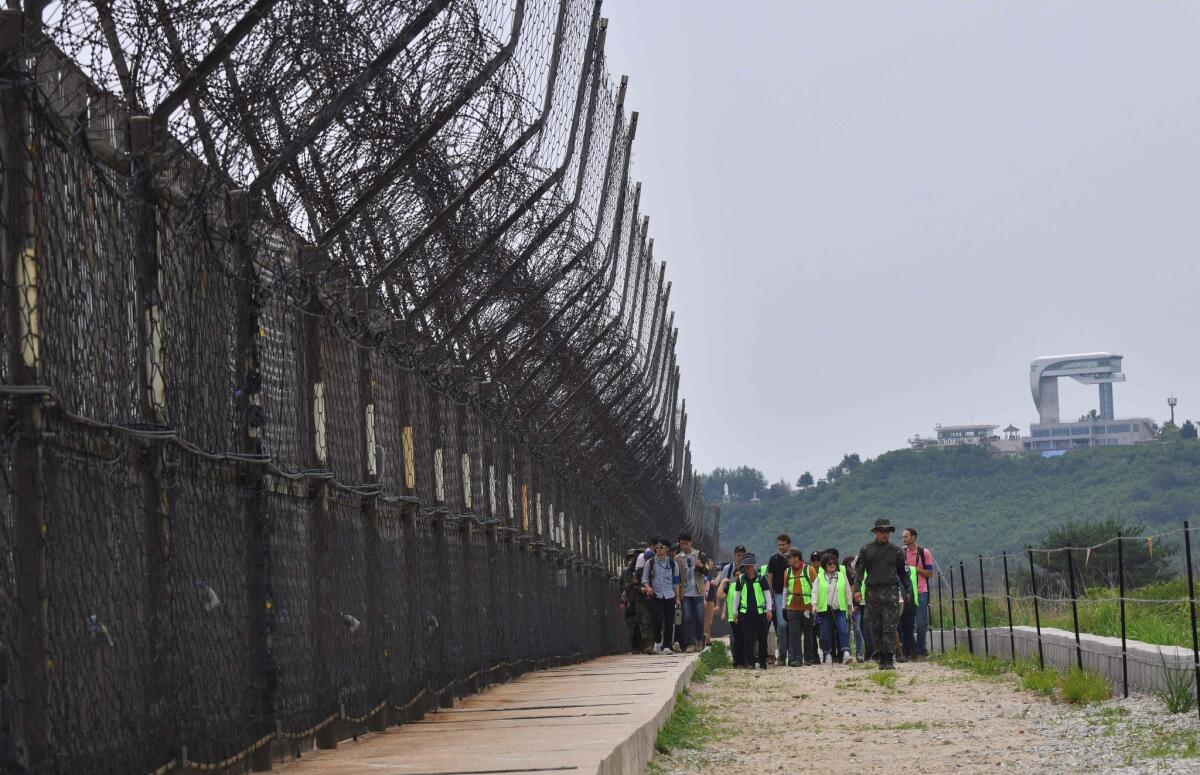
More to Read
Sign up for Essential California
The most important California stories and recommendations in your inbox every morning.
You may occasionally receive promotional content from the Los Angeles Times.

